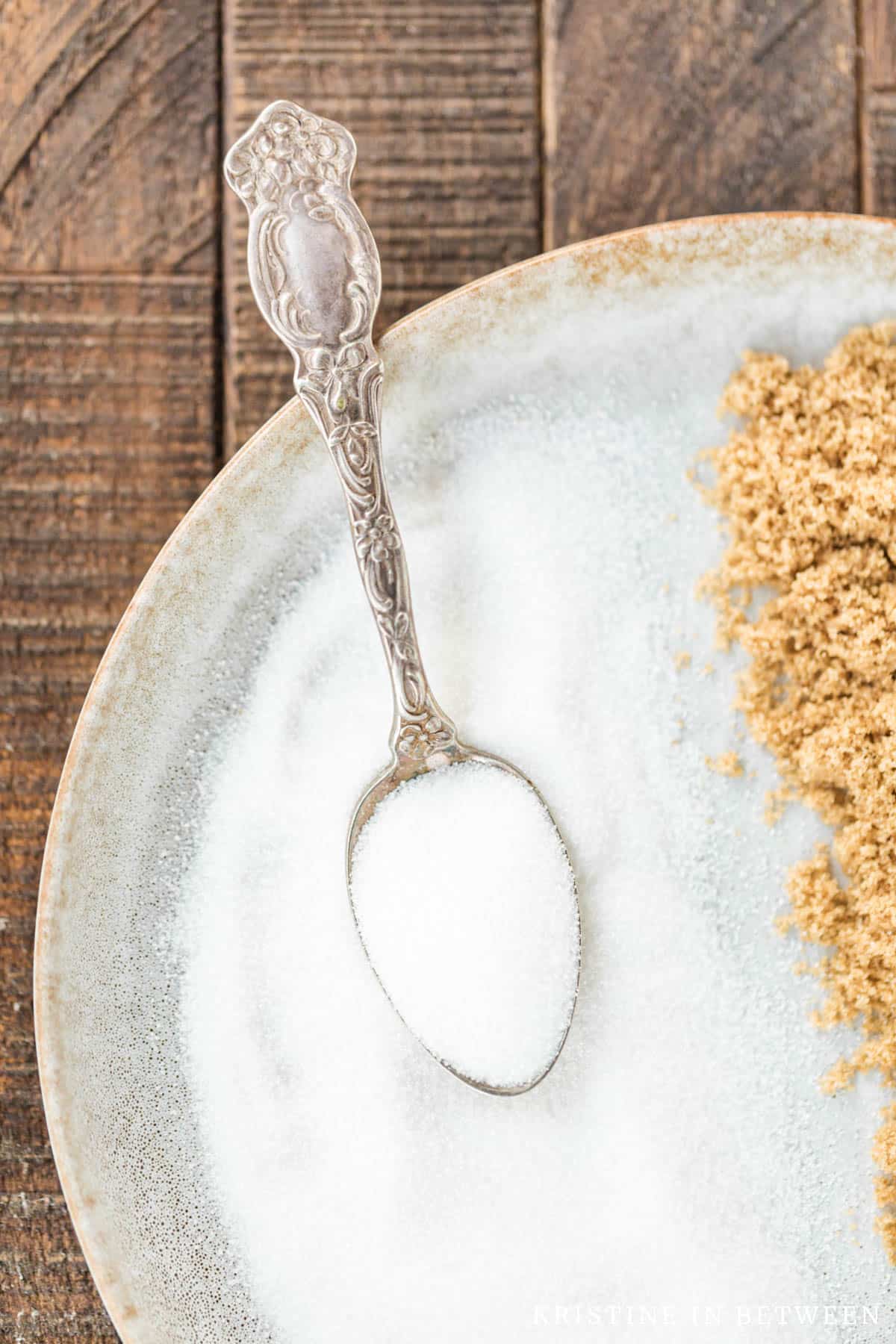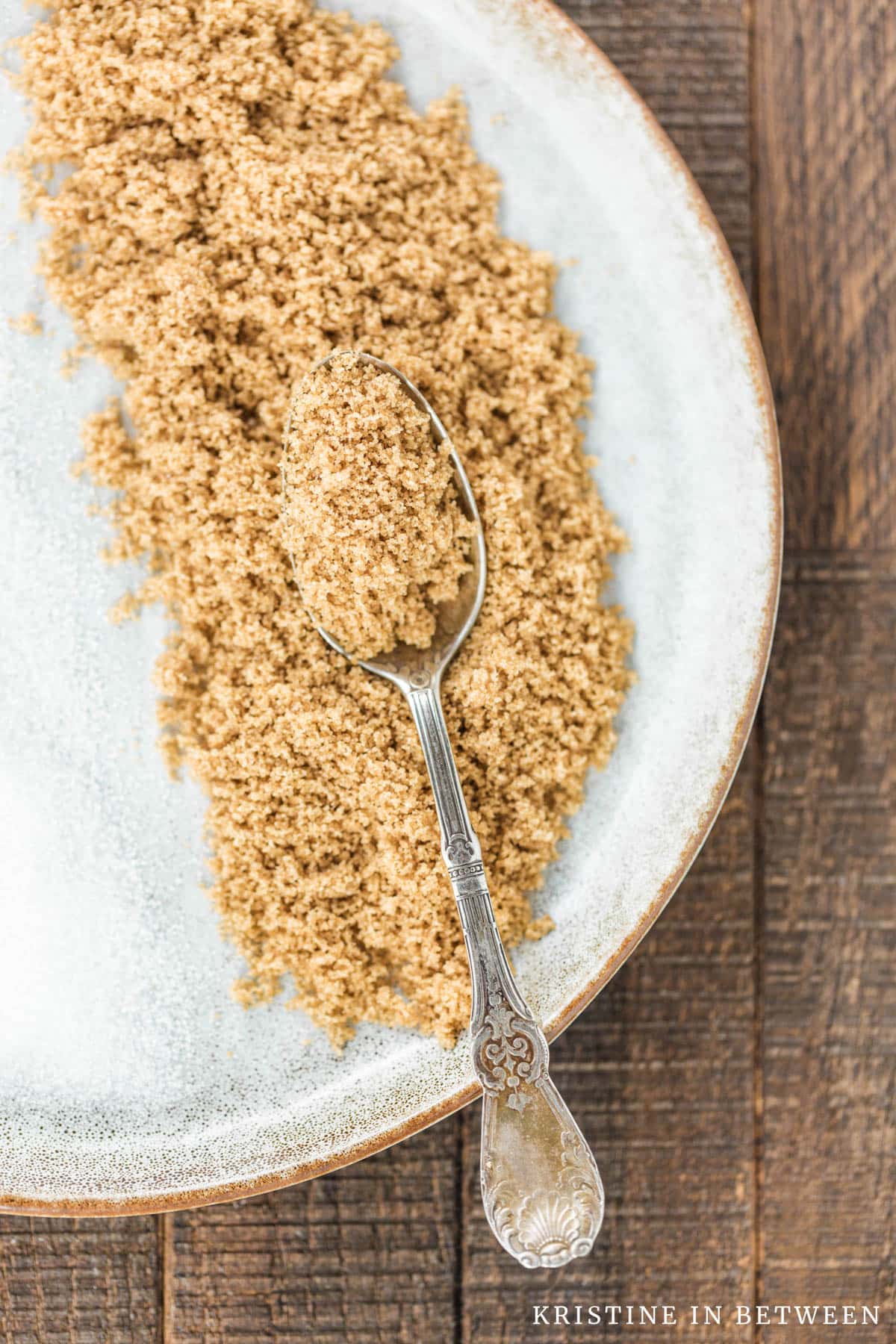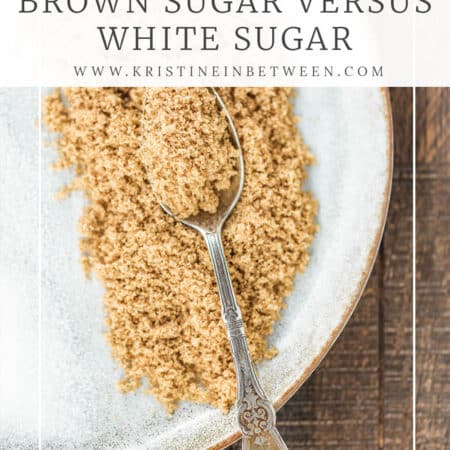This post contains affiliate links and we make a small commission for purchases made using these links.
Today, I want to go over something super important. Brown sugar versus white sugar. Specifically, the differences between these sugars and how these two ingredients play unique roles in all of your your baked goods.
White Sugar, The Sweet and Simple
White sugar, often referred to as granulated sugar, is a pantry staple in most of our kitchens. It’s made from refined sugar cane or sugar beet, resulting in its pristine white appearance.
When it comes to baking, white sugar is like your trusty sidekick, playing several essential roles:
- Sweetening Power: The most obvious role of white sugar is to sweeten your baked goods. It adds that delightful sweetness that tickles our taste buds and makes treats irresistible.
- Tenderizer: White sugar helps tenderize baked goods by weakening gluten formation. This is particularly handy when you’re making delicate pastries like shortbread or tender cakes.
- Moisture Retainer: White sugar has a unique ability to retain moisture, keeping your baked goods moist and soft. It’s perfect for creating that luscious, melt-in-your-mouth texture in brownies and cookies.
- Leavening Agent: In some recipes, sugar can act as a leavening agent. When creamed with butter, it traps air and creates pockets of gas during baking, helping your treats rise.
Now, let’s shift our focus to its darker counterpart, brown sugar.

Brown Sugar, The Rich and Complex
Brown sugar comes in various forms, but the two most common types are light and dark brown sugar. Brown sugar is made by adding molasses back to white sugar, giving it a beautiful caramel color and a unique flavor profile.
Brown sugar’s roles in baking are equally fascinating:
- Flavor Booster: The molasses in brown sugar isn’t just for show; it adds a rich, caramel-like flavor to your baked goods. This makes brown sugar the go-to choice for recipes where a hint of complexity and depth is desired.
- Moisture Master: Brown sugar has more moisture than white sugar, thanks to the molasses content. This extra moisture contributes to a soft and chewy texture in cookies and muffins.
- Binder: Brown sugar’s stickiness helps bind ingredients together, which is particularly important in recipes like oatmeal cookies and granola bars.
- Crunch and Color: In some recipes, like crumb toppings for pies or coffee cakes, brown sugar is used to add a delightful crunch and a beautiful golden-brown color to the topping.

When to Use Which?
Now that we know the roles of both of these sugars, the big question is when to use white sugar and when to go brown.
Here are some handy guidelines:
- White Sugar: Use it when you want a pure, clean sweetness without altering the flavor significantly. It’s great for lighter-colored treats like sugar cookies or angel food cake.
- Light Brown Sugar: Choose this for a subtle caramel flavor and a touch of moisture. It works well in recipes like chocolate chip cookies and banana bread.
- Dark Brown Sugar: When you’re after a more intense caramel flavor and a moister texture, reach for dark brown sugar. It’s perfect for gingerbread, brownies, and sticky toffee pudding.
Tip
In some recipes, a combination of white and brown sugar can strike the perfect balance between sweetness, moisture, and flavor. I use a mix of both in a lot of my cookies.
So, as you can see my friend, both white sugar and brown sugar are essential ingredients in your baking arsenal, each playing a unique role in creating scrumptious treats.
By understanding their differences and when to use them, you’ll have the sweet science of baking down to a T. So, go ahead – get your apron on, and whip up some delightful baked goods using the right sugar for the job (or both, haha).




This is awesome! I learned a lot that I didn’t know before now. Thank you!
Hey, Ned – thanks so much. Glad to hear you found it helpful!
This was so informative and helpful! Now I’m going to try white and brown sugar in my muffins!
Thank you, Emily! You definitely should – mmm!
This was such a helpful guide to figuring out when to use brown sugar vs. white sugar in baking! I’ll be bookmarking this and referring back to it often!
Thank you Anjali! I’m so glad you found it helpful.
Thank you for breaking this down in an understandable way. This is very helpful!
You bet, I’m glad you found it useful!
Such great information! Especially helpful with the upcoming holiday and baking season. Love that photo of them side by side too.
Thank you so much, Tara! Just doing my best to help the people out, haha!